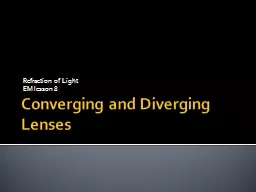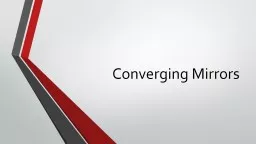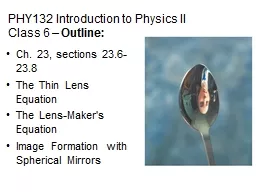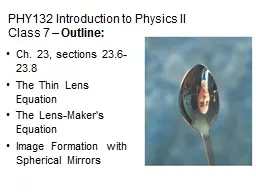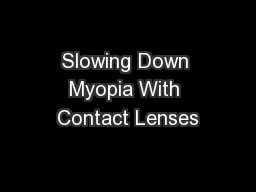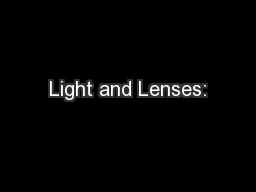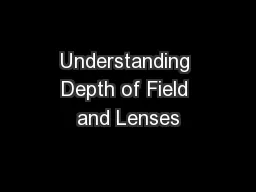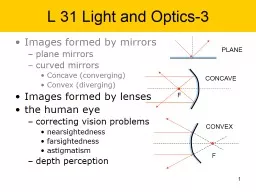PPT-Converging and Diverging Lenses
Author : tatiana-dople | Published Date : 2016-09-20
Refraction of Light EM lesson 8 Convex converging Lens Thicker in the center than at the edges Have positive focal lengths Converge parallel rays of light that
Presentation Embed Code
Download Presentation
Download Presentation The PPT/PDF document "Converging and Diverging Lenses" is the property of its rightful owner. Permission is granted to download and print the materials on this website for personal, non-commercial use only, and to display it on your personal computer provided you do not modify the materials and that you retain all copyright notices contained in the materials. By downloading content from our website, you accept the terms of this agreement.
Converging and Diverging Lenses: Transcript
Download Rules Of Document
"Converging and Diverging Lenses"The content belongs to its owner. You may download and print it for personal use, without modification, and keep all copyright notices. By downloading, you agree to these terms.
Related Documents

